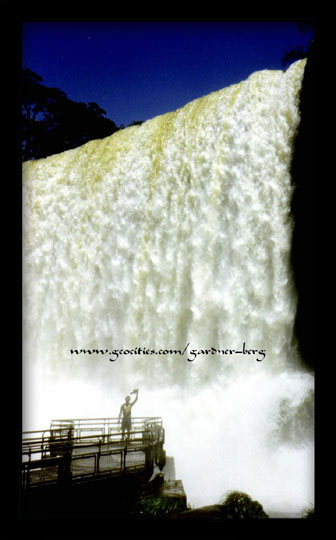
Iguacu Falls, ARGENTINA
| Translate: EspaŮol - FranÁais - Deutsch - Italiano - PortuguÍs - Japanese - Korean - Chinese |

Iguacu Falls, ARGENTINA
| Translate: EspaŮol - FranÁais - Deutsch - Italiano - PortuguÍs - Japanese - Korean - Chinese |


FEBRUARY 9, 2001 -- We hop on an afternoon bus heading south to Punta Arenas, Chile's southern-most city, which overlooks a strip of continuous marine waterway that directly joins the Pacific with the Atlantic oceans. This waterway, the Straits of Magellan (Estrecho de Megallanes) also separates Patagonia from the island of Tierra del Fuego.
Isla Grande de Tierra del Fuego (76 000 sq.kms). Over half the area (west) belongs to Chile, but most of the population is concentrated on the Argentine side (east). It is also the setting of a sad history for the indigenous peoples that once occupied this archipelago.
According to recent research by anthropologists in the late eighties/early nineties, the crossing from Patagonia to Tierra del Fuego was possible at different times during a period spanning late Pleistocene to early Holocene transition (i.e. between 8000 and 14 000 years ago). The climate in 'Fuego-Patagonia' for the earlier part of this period was very harsh. Despite a demanding physical environment, the first bands of hunter-gatherers made their way by land bridge onto the northern part of Isla Grande de Tierra del Fuego
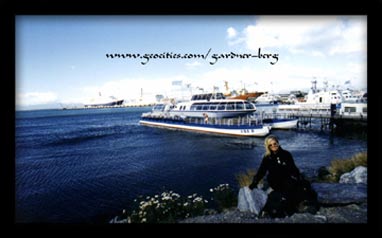 around 11 000 years ago. As the climate warmed and the sea levels rose over the land bridge, the population became isolated (8000 years ago) that is, until a canoe technology developed enough to permit navigation of the inland waterways. The most distinguishable groups of South Patagonia/Tierra del Fuego were: Aonikenk of South Patagonia, Selk'nam of northern Tierra del Fuego, Yamana of Canal Beagle and Cape Horn, Kaweskar of the outlying western channels (Canoe tribe).
around 11 000 years ago. As the climate warmed and the sea levels rose over the land bridge, the population became isolated (8000 years ago) that is, until a canoe technology developed enough to permit navigation of the inland waterways. The most distinguishable groups of South Patagonia/Tierra del Fuego were: Aonikenk of South Patagonia, Selk'nam of northern Tierra del Fuego, Yamana of Canal Beagle and Cape Horn, Kaweskar of the outlying western channels (Canoe tribe).
April 1520, when Ferdinand Magellan and his crew first encountered the Indians of Patagonia, marks the beginning of the end of the ancient terra-migratory culture to make way for European expansion. Beginning with a century of sporadic violent clashes due to rough treatment of the natives through brutal and unjustifiable aggression. Most notorious events triggered by Pedro Sarmiento de Gamboa's men at Tierra del Fuego (February 1580) and at Punta Dungeness (February 1584) and San Gregorio (March 1584). Really cruel and bloody were the clashes instigated by Sir Francis Drake on the western end of the Straits of Magellan (August 1578) and by Oliver van Noort's crew on the northern coast of Tierra del Fuego (November 1599).
It is established that most, if not all, of the violence were provoked by European newcomers. By the 1700's, meetings were generally peaceful except for undisciplined crews of wayward vessels; seal hunters in pursuit of marine mammals - rough and violent people whose hardened attitude stem from the conditions of the merciless seas they travel upon.
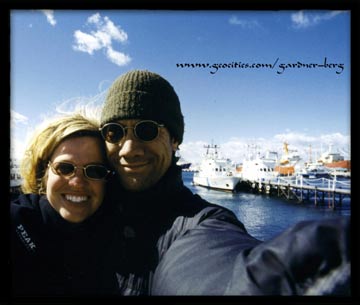 When Punta Arenas was founded in 1848 there were approximately 10,000 - 11,000 Indians living in scattered communities.
When Punta Arenas was founded in 1848 there were approximately 10,000 - 11,000 Indians living in scattered communities.
1877-78, colonists introduce sheep ranching and begin to encroach upon pasture land which belonged to the Aonikenk (northern coast of the Strait). They had hunted on these lands since time immemorial. In 20 years, sheep-herding had rapidly expanded, resulting in continuous pressure on the Indians to relinquish their access to favoured territories and resort instead to less productive areas. Pushed to the Chilean border during the early 1900's, the tribe suffered an introduced viral epidemic and within a space of a few years the majority of them died. The Aonikenk proceeded on their march towards extinction. At the same time the Sociedad Explotadora de Tierra del Fuego, a company which had acquired most of the potentially useful grazing land through public auctions held in 1905, proceeded to occupy its holdings; creating 2 large estates: Caleta Josefina and San Sebastian.
The Kaweskar met the same fate but under different circumstances. The canoe tribe were more aggressive; rustled cattle resulting in ranchers taking the law into their own hands, killing many members and taking their children as prisoners. To add salt to their wounds, there was the constant physical harassment from whalers and sealers as well.
Missionary stations were established by Waite H. Stirling and Thomas Bridges to pursue their Christian and humanitarian ideals. They had to close the stations in 1917 when Indians became too few in numbers.
 The fate of the Selk'nam followed a similar pattern as that of the Aonikenk. 1881: prospectors arrive on Selk'nam territory in search of placer gold, followed by harsh treatment towards the tribe and forcibly taking their women. The Selk'nam, having not seen sheep before, began stalking the 'white guanaco'- provoking severe retaliation by the ranchers.
The fate of the Selk'nam followed a similar pattern as that of the Aonikenk. 1881: prospectors arrive on Selk'nam territory in search of placer gold, followed by harsh treatment towards the tribe and forcibly taking their women. The Selk'nam, having not seen sheep before, began stalking the 'white guanaco'- provoking severe retaliation by the ranchers.
From the merits of their own worth, the ranchers had sponsored secret lynch mobs and killing sprees on the plains and mountains of the Fuegian north. Yet despite attempts to conceal the ordeal of the Selk'nam, word finally reached Punta Arenas, resulting in international press coverage alerting Chile's National Congress and Administration to the issue. Relocation of the Indians followed - forcibly transferring them to the Salesian missions.
Contagious diseases, particularly pulmonary infections, diminished their numbers at the missions even further. Tragically, during the winter of 1884, half of the Indians at the Protestant Mission of Ushuaia died from pneumonia. But more devastating was tuberculosis, eliminating two-thirds of the total Indian population at the Mission between 1896 and 1900.
In September 1911, when the Salesian Mission closed at San Rafael, only 25 out of 1000 survived that had entered between 1889 and 1898.
In scarcely 60 years, colonisation had succeeded in profoundly altering, and eventually destroying, an ancient order of life and culture. A sad and largely unwritten brief history of southern Patagonia/Tierra del Fuego.
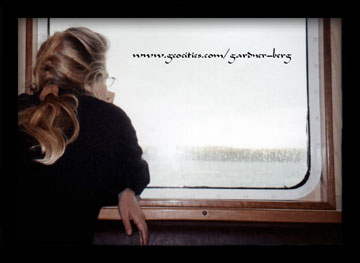 FEBRUARY 11, 2001 -- Today is the day we reach our southernmost destination on our journey of the Americas - Ushuaia. From Punta Arenas, this involves a ferry across the Straits of Magellan to Porvenir. A waiting bus drives east to the San Sebastian border into Argentine territory, then along the Atlantic coastline to Rio Grande. Scenery was more or less featureless up to this point. The southwest road to Ushuaia provided beautiful views of the large lake of Fagnano and the smaller Escondido with its surrounding wooded region and snow-capped mountains of the National Park close by.
FEBRUARY 11, 2001 -- Today is the day we reach our southernmost destination on our journey of the Americas - Ushuaia. From Punta Arenas, this involves a ferry across the Straits of Magellan to Porvenir. A waiting bus drives east to the San Sebastian border into Argentine territory, then along the Atlantic coastline to Rio Grande. Scenery was more or less featureless up to this point. The southwest road to Ushuaia provided beautiful views of the large lake of Fagnano and the smaller Escondido with its surrounding wooded region and snow-capped mountains of the National Park close by.
A couple of experienced trekkers from Tasmania ('Tazzy'), Australia, at a popular hostal we stayed at, recalled seeing us on the Paine trail and confessing to 'stealing' our campsite (private joke) - sparking off friendly banter. It's always a pleasure to have a 'pow wow' with others doing the same kind of travel we do; sharing experiences and, more importantly, renewing much needed enthusiasm during times of cultural monotony.
FEBRUARY 14, 2001 -- Time to begin the northbound route along the Atlantic side of South America. It should be better travel conditions compared to the that of the Andes. Most of the roads are sealed, they're straighter and the climate not as cold or as dry as that of higher altitude environment.
From Ushuaia, we slowly make our way by bus out of Patagonia and north along the coastal outskirts of the Pampas region, taking a total of 4 days to reach the Argentine capital of Buenos Aires.
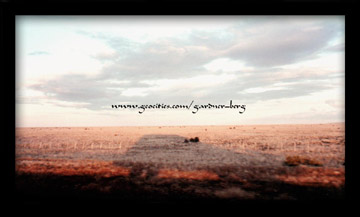 FEBRUARY 19, 2001 -- We arrive in Buenos Aires 8.30am - weather is clear but humid. The cheapest accommodation available here is in the San Telmo district - south of the centre. 'Barrio' of San Telmo still retains some colonial character but because of its high prices, we keep our stay long enough to each obtain an overland visa for Brazil.
FEBRUARY 19, 2001 -- We arrive in Buenos Aires 8.30am - weather is clear but humid. The cheapest accommodation available here is in the San Telmo district - south of the centre. 'Barrio' of San Telmo still retains some colonial character but because of its high prices, we keep our stay long enough to each obtain an overland visa for Brazil.
The Argentine colonial period (1543 - 1810) was on the whole - uneventful. Spaniards seeking fortune disembarked in Buenos Aires only to hurry across the northern Pampas to the silver mines of Bolivia and Peru. Those who remained lived a quiet existence until Jose de San Martin's crusade for revolution. Argentina proclaimed their independence from Spain on July 1816.
In colonial Argentina and well into the 1800's almost everyone rode a horse. Even some Indians, also, took to horses; the Mbaya tribe abandoned agriculture completely and constituted themselves an aristocracy of horsemen and herders ruling over the the pedestrian Indian tribes. For more than 200 years during colonial times, the gauchos collected hides and led a life away from the confines of society. During the first 75 years of the nineteenth century they actively participated, often cruelly, in the frequent wars of the period. Then, from the slashes of a writer's pen, they were immortalized as figures of idyllic romance. Some realistic and thoughtful Argentines point out that the real gauchos were lawless and ignorant horsemen, so tough and rowdy that the drinking houses where they often visit had iron grills to protect the barmen.
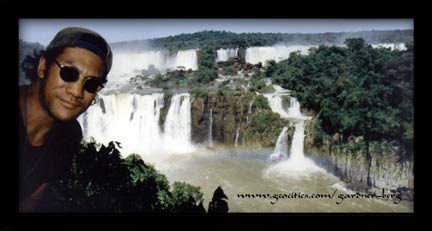 Nevertheless, the gaucho became and remains a symbol of certain Argentine ideals: self-sufficiency, stoic courage, and pride in national achievement. In 1952, the government established the 'Day of Tradition'. The President of the National Commission of Culture announced a policy "...to protect the world of the national spirit, guarding it from exotic influences. We will keep alive our native music and primitive dances, the vivid representatives of our past, reminding us of our native genius, our respect for the family, our cult for courage, the beauty of popular poetry and our vernacular idiom."
Nevertheless, the gaucho became and remains a symbol of certain Argentine ideals: self-sufficiency, stoic courage, and pride in national achievement. In 1952, the government established the 'Day of Tradition'. The President of the National Commission of Culture announced a policy "...to protect the world of the national spirit, guarding it from exotic influences. We will keep alive our native music and primitive dances, the vivid representatives of our past, reminding us of our native genius, our respect for the family, our cult for courage, the beauty of popular poetry and our vernacular idiom."
The roving gaucho officially became the central figure in Argentine life.
Argentina's vast, grass-covered plains (Pampas) began to assume an important role. More than 650 000 sq.kms in size, with deep, rich soil, generally dependable rainfall, mild winters and hot summers - the Pampas and the livestock that grazed there became solely responsible for Argentina's new found wealth: by producing cheap beef for Great Britain's increasing population. Introduction of British pedigreed cattle greatly improved the stock and the wild, tough prairie grass on which the cattle initially fed on was replaced by introduced alfalfa. The same formula was applied to sheep herding as well.
Between 1858 and 1930, 6 million immigrants poured into Argentina as was encouraged by the 1853 Constitution drawn up by Juan Bautista Alberdi's regime.
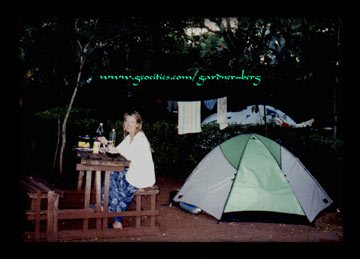 In 1876, a small refigerator ship from France was used to transport the Argentine beef across the tropics to Europe. Within 10 years 57 refrigerator ships ran back and forth between Buenos Aires and British ports alone.
In 1876, a small refigerator ship from France was used to transport the Argentine beef across the tropics to Europe. Within 10 years 57 refrigerator ships ran back and forth between Buenos Aires and British ports alone.
A railway network was built to connect Buenos Aires port to the heartland. Barbed wire fences were then erected throughout the Pampas - pushing the Indians further and further east into the mountains.
Grain production was underway by 1900 which became even more important to the nation's economy than meat and other animal products.
The result was a commercial revolution which converted Argentina into the world's greatest meat exporter and one of the largest producers of grain, land values raised to fabulous heights and with unprecedented rapidity and emphasised education, became a highly urbanised commercial civilisation. The economic, social and political control of Argentina were very much in the hands of a landed aristocracy of about 2000 families who spent their wealth so freely in Paris that the 'rich Argentine' became a well known literary figure.
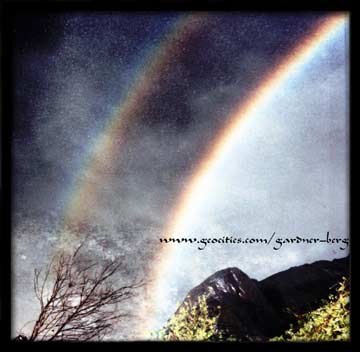 FEBRUARY 24, 2001 -- After resupplying our packs and restocking our stomachs we leave the big city on an Executive Class overnight bus north to Puerto Iguazu. 2 meals, a good selection of still and sparkling wines, and movies. It was very pleasant and a nice change from the norm.
FEBRUARY 24, 2001 -- After resupplying our packs and restocking our stomachs we leave the big city on an Executive Class overnight bus north to Puerto Iguazu. 2 meals, a good selection of still and sparkling wines, and movies. It was very pleasant and a nice change from the norm.
FEBRUARY 25, 2001 -- Bus arrives at Puerto Iguazu 11am. A small, quiet town sitting on the southeast corner of the rivers of Parana and Iguazu Inferior. It's hot and humid today and, being a Sunday, most of the stores are closed. We walk on the main road running southeast out of town to a large campground with, to our relief, a swimming pool. The owners are very friendly which, to us, makes up for the rundown facilities.
Day visits to both sides of the Iguazu Falls (i.e. Argentine and Brazilian ends). Iguazu (or 'Big Waters' in Guarani) is overwhelming. Breathtaking waterfalls of which its huge volume is the culmination of around 30 rivers constantly feeding it before crossing over the basalt rock formations. The impacts of water of some 275 falls creates heavy clouds of mists allowing, on clear days, bright rainbows.
Photos and Text Copyright © 1999-2001 Gardner-Berg. All rights reserved.
Sources of Further Reading-
Falkner, Thomas. "Description of Patagonia and the Adjoining Parts of South America" 1978
Fraser, Nicholas. "Evita: The Real Life of Eva Peron" 1996.
Hatcher, John B. "Bone Hunters in Patagonia: Narrative of the Expedition" 1985.
Hudson, W.H. "Idle Days in Patagonia" 1968.
Partnoy, Alicia. "The Little School: Tales of Disappearance and Survival in Argentina" 1998.

